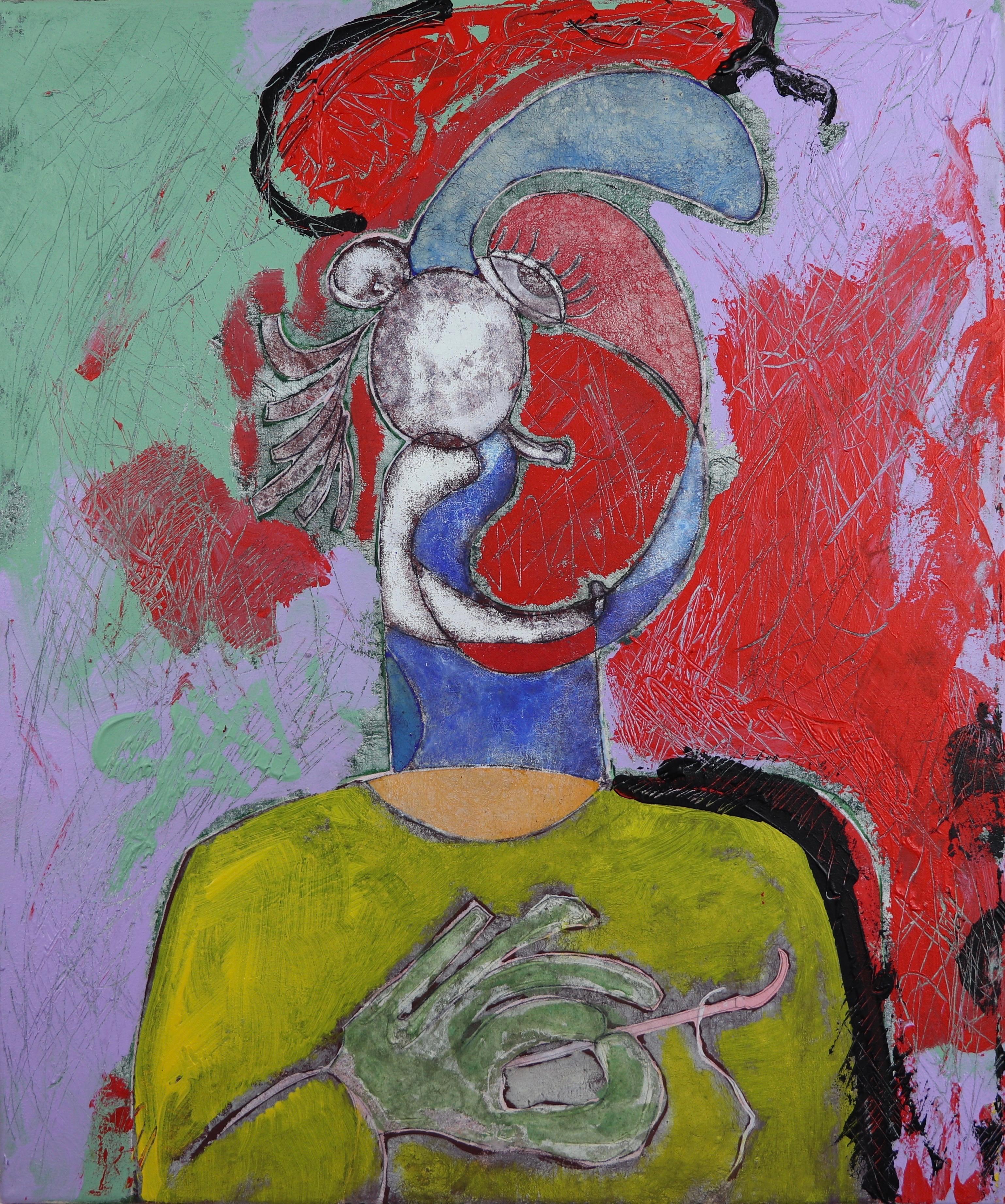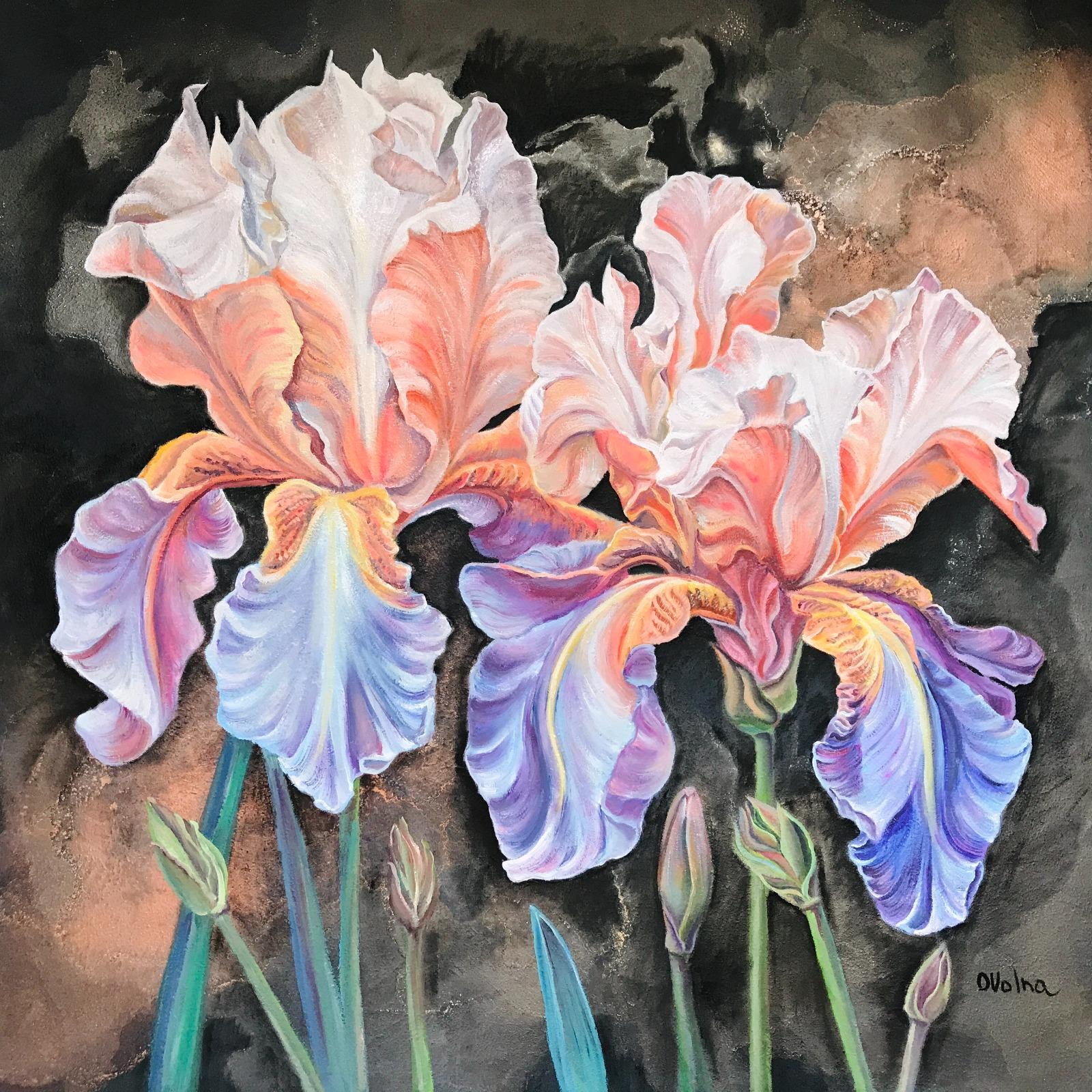Items Similar to "Lady in Crocs" canvas, oil 70x100cm
Want more images or videos?
Request additional images or videos from the seller
1 of 5
Stepan Lysenko"Lady in Crocs" canvas, oil 70x100cm
About the Item
"Lady in Crocs"
canvas, oil
70x100
- Creator:Stepan Lysenko
- Dimensions:Height: 39.38 in (100 cm)Width: 27.56 in (70 cm)
- Medium:
- Period:
- Condition:
- Gallery Location:Yerevan, AM
- Reference Number:1stDibs: LU1514214337112
About the Seller
4.9
Platinum Seller
These expertly vetted sellers are 1stDibs' most experienced sellers and are rated highest by our customers.
Established in 2019
1stDibs seller since 2021
233 sales on 1stDibs
Typical response time: <1 hour
- ShippingRetrieving quote...Ships From: Yerevan, Armenia
- Return PolicyA return for this item may be initiated within 14 days of delivery.
More From This SellerView All
- Roses on turquoise, 80x60 cm, oil/canvaBy Olga VolnaLocated in Yerevan, AMRoses on turquoise, 80x60 cm, oil/canvasCategory
2010s More Art
MaterialsCanvas, Oil
- Flaming irises , 80х80 cm, oil/canvasBy Olga VolnaLocated in Yerevan, AMFlaming irises , 80х80 cm, oil/canvasCategory
2010s More Art
MaterialsCanvas, Oil
- Whispers of gold , 80х80 cm, oil/canvasBy Olga VolnaLocated in Yerevan, AMWhispers of gold , 80х80 cm, oil/canvasCategory
2010s More Art
MaterialsCanvas, Oil
- ”Yellow” canvas, oil, 60x60cmLocated in Yerevan, AM”Yellow” canvas, oil, 60x60Category
2010s Paintings
MaterialsCanvas, Oil, Acrylic
- Splash, 120x160cm, oil/canvasLocated in Yerevan, AMSplash, 120x160cm, oil/canvasCategory
2010s More Art
MaterialsCanvas, Oil
- Under the water, 120x90cm, oil/canvasLocated in Yerevan, AMUnder the water, 120x90cm, oil/canvasCategory
2010s More Art
MaterialsCanvas, Oil
You May Also Like
- "Bookstore from the Bank" 2017 oil painting, impressionist street scene at nightBy Viktor ButkoLocated in Sag Harbor, NYPainted en plein air, in Sag Harbor, New York. Situated in the People's United Bank parking lot, Butko looks over to the opposite side of Main Street. Beneath tall, fully bloomed trees, illuminated storefronts glisten after they close up for the day. Victor Butko was born into a long line of artists, and has been mentored in painting since the age of 8. He is currently the youngest artist exhibiting at Thomas Kearns McCarthey Gallery, one of the foremost dealers in the United States for Russian Impressionist art...Category
21st Century and Contemporary Impressionist Landscape Paintings
MaterialsOil, Canvas
- Portrait of a Newfoundland dog, William Smith, British Painting, 1838, Pets ArtLocated in Greven, DEThe works of William Smith were regularly exhibited at the Royal Academy in London between 1813 and 1859. Yet little is known about this artist. He lived in Shropshire and was active...Category
19th Century Romantic Animal Paintings
MaterialsCanvas, Oil
- London Suburb - Late 20th Century Landscape Oil in London by MilneLocated in Watford, HertfordshireVincent Milne Born Hackney, London 1953 Has exhibited widely, notably in New Contemporaries, Stowells Trophy at the Royal Academy, Whitechapel Open, Ne...Category
1990s Contemporary Landscape Paintings
MaterialsCanvas, Oil
- Guardian Angel Selfie. Neo Expressionist PaintingBy Sax BerlinLocated in Brecon, Powys"Sharp Edge" Neo Expressionism from the studio of Sax BerlinCategory
2010s Neo-Expressionist Figurative Paintings
MaterialsCanvas, Oil, Acrylic
- Portrait of a Lady, Katherine St Aubyn, Godolphin, Cornelius Johnson, Oil canvasBy Cornelius JohnsonLocated in London, GBTitan Fine Art are pleased to present this charming bust-length portrait, which is a good example of the style of portrait painted in England in the second quarter of the seventeenth century. The attire consists of the finest silks, and the full billowing sleeves, bows, and hairstyle help in dating this portrait to circa 1637. The accessory par excellence – pearls – are worn as a necklace and were a very popular accessory. The artist makes no attempt to obey the rules of Baroque and instead sensitively depicts in complete honesty his sitter against a plain wall, and without distracting backdrops and flowing draperies – this work is very redolent of the sumptuous half-length female portraits that Cornelius Johnson...Category
17th Century Old Masters Portrait Paintings
MaterialsCanvas, Cotton Canvas, Oil
- Pair (2) Portraits Gentleman & Lady, William & Rachel Helyar c.1656, Civil WarBy Robert WalkerLocated in London, GBPortrait of Colonel William Helyar (1621-1698) and Rachel Helyar (c.1633-1678) c.1656 Circle of Robert Walker (act. 1637-1656) These fascinating portraits, presented by Titan Fine Art, depict Colonel William Helyar, High Sheriff of Somersetshire, and his wife Rachel Helyar nee Wyndham, a daughter and co-heiress of Sir Hugh Wyndham, 1st Baronet (died 1663) of Pilsden Court, Dorset. They are exquisite examples of portraiture during the Interregnum when England was under various forms of republican government. The history of the seventeenth century is in part the story of the Stewarts and their approach to government and the church; their ebbing and flowing popularity and the disastrous decisions that led to Civil War. But another fascinating dynasty also ruled Britain: the Cromwell’s. Between 1653 and 1659, following the Civil Wars and experimental Commonwealth, Oliver Cromwell governed as Lord Protector followed by his son Richard. Cromwell’s Protectorate is usually imagined as a grey, joyless, military regime. But the reality was rather different. Cromwell presided over a colourful and fashionable court where music and the arts flourished, masques were revived and the first English operas performed. Too often the London of the 1650s is painted as puritanical and repressive in contrast to the vivid, fun-loving capital of the Restoration. Yet, under Cromwell, this was the city where the first coffee houses were opening, where a young Samuel Pepys was embarking on his career as a civil servant with the patronage of one of Cromwell’s councillors and where Christopher Wren was enjoying his new Chair of astronomy at Gresham College, appointed after the personal intervention of Cromwell. When Cromwell was invested as Lord Protector for the second time in 1657, the lavish ceremony in Westminster Hall and procession through London matched any previous coronation for pageantry with thousands lining the streets, bells ringing, bonfires blazing and free French wine flowing through the city. The gentleman in our portrait is Colonel William Helyar (1621-1698), Sheriff of Somerset and as a Royalist during the English Civil War. As one of the most prominent old families of the South-West, the Helyar’s family roots in Somerset can be traced back to 1616 when the Reverend William Helyar (1559-1645), chaplain to Elizabeth I, who was also a cousin by marriage, purchased the family residence Coker Court in East Coker, Somerset. He married a Devonshire heiress and several estates were bestowed on him as a result. He was a warm supporter of Charles I in the Civil War and was in residence at Exeter in 1643 when the Parliamentarians pillaged the cathedral. Elderly as he was, he boldly resisted them, but was beaten, pelted with mud, and locked up in a ship in the port and only let out on payment of £800. He retired to Coker where he died in 1645. His eldest son Henry died in 1634 and he was succeeded by his grandson, Colonel William Helyar, the sitter in our portrait. Colonel Helyar raised a troop of horse for King Charles I and was a colonel in the king's army. He was at Exeter when it was captured by the Parliamentary forces in 1646 and thus deemed ‘Traitor to the Parliament’. His estates were sequestered, but they were returned and he was discharged and pardoned on payment of £1,522. During the Restoration he was a Sheriff and he also helped James II repel the Monmouth Rebellion. The companion portrait represents the Colonel’s wife, Rachel Helyar (baptised 24th June 1633 at St Mary Aldermanbury, London – died 1678). She was the youngest daughter and co-heir of Sir Hugh Wyndham, 1st Baronet of Pilsdon Court and Mary Wyndham nee Alanson (Sir Hugh should not be confused with his first cousin once removed from Somerset, also Sir Hugh Wyndham (bef. 1604 - 1684). Rachel is a thirteenth generation descendant of King Henry III. The couple resided at the family seat of Coker Court (interestingly, within the churchyard, lie the remains of the poet T.S. Eliot who once wrote a poem about East Coker). A marriage settlement in extant shows that the couple were married in 1656; the portraits were most likely painted to mark this important event in the sitter’s lives. Rachel holds roses, the flower of love, and the putto pouring water is representative of her purity, and possibly, the plighting of troth. Colonel Helyar wears a gold wedding band. The couple had four sons: George, William (MP) (1662-1742), John, and Richard. Colonel Helyar died in December 1697 and was buried at Whitechurch, Dorset 2 Jan 1698. This period in which this portrait was painted was known as the Protectorate (1653-1659). This period offered relative peace, as the English Civil War ended in 1651. It was an interesting time for portraiture in England and Scotland – in between the great artistic geniuses and dominance of Van Dyke and Peter Lely. Much of the foreign-born artistic talent had fled England and Scotland during the Civil War and the artists that had remained were in great demand, in part due to the newly exposed strata of society wishing to be painted. Sitters on both sides were depicted in portraits in very similar ways. They are not, on the whole, shown as the Roundheads and Cavaliers of popular history. In fact, it is usually impossible to guess their political allegiances from the style of their portrait and their Parliamentarian and royalist iconographies, as portraits on both sides followed the same conventions and looked identical. Colonel Helyar has been depicted in armour and holding a Marshal’s baton of command, confirming his status. There is a great sense of realism and a particular delicacy, note the finely rendered hand resting on the rapier. Rachel is wearing a satin dress with expansive sleeves and a crimson drapery over her shoulder and held up by her left hand. She wears large pearl...Category
17th Century Old Masters Portrait Paintings
MaterialsCanvas, Oil
Recently Viewed
View AllMore Ways To Browse
Oil Lady
Lady Oil Paint
Used Crocs
The Lovers
Paintings Of Mountains
Portrait Of Self
Vintage Family Signs
Flower Painting Signed
French Street
California Artist Oil
Painting Frames Mid 20th Century
Portrait In Blue
Bright Landscape
Canvas Flowers Paintings
Vintage House Painting
Impressionism Painting
Impressionism Paintings
Vintage European Painting




